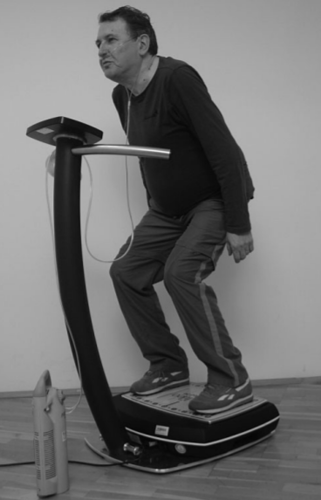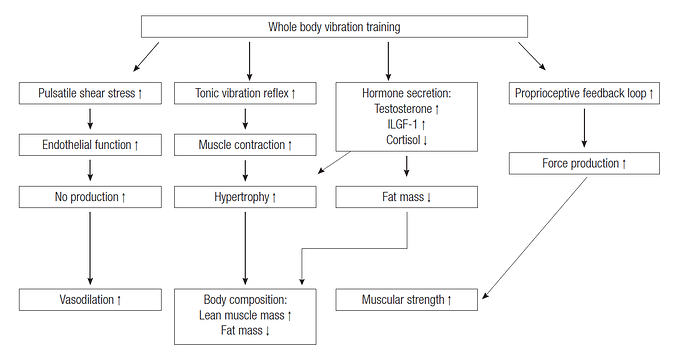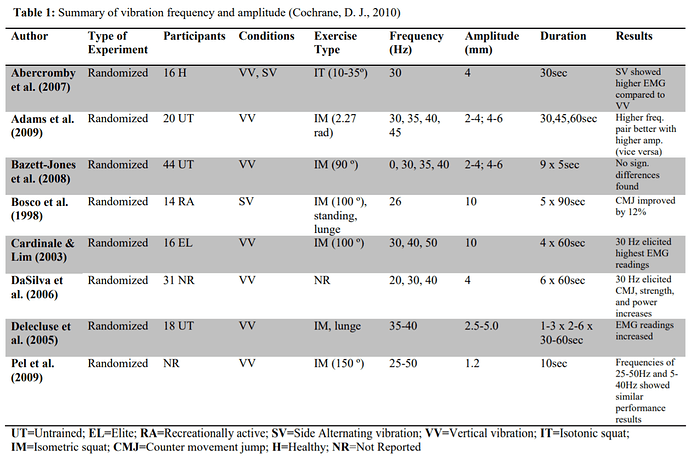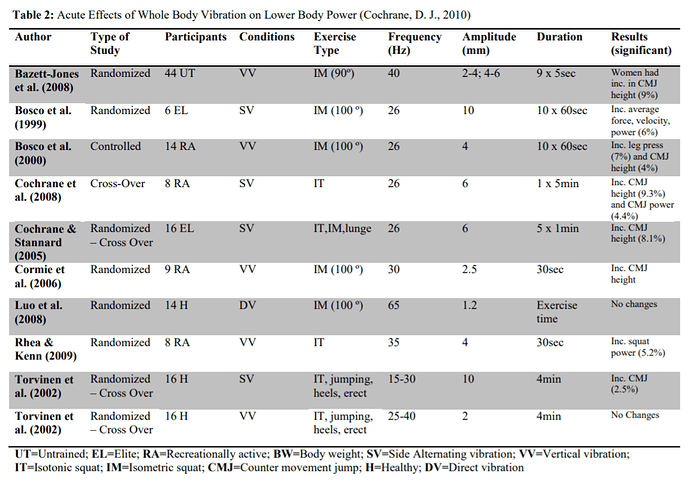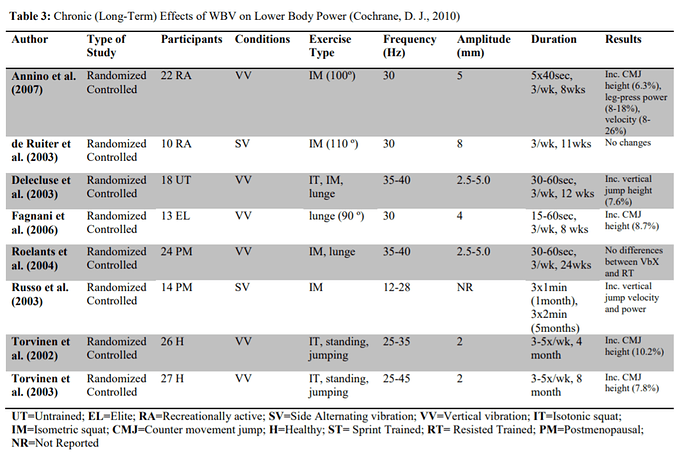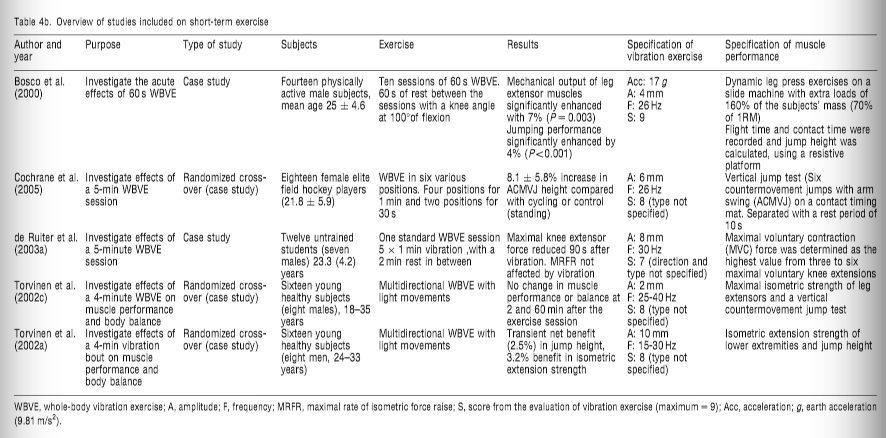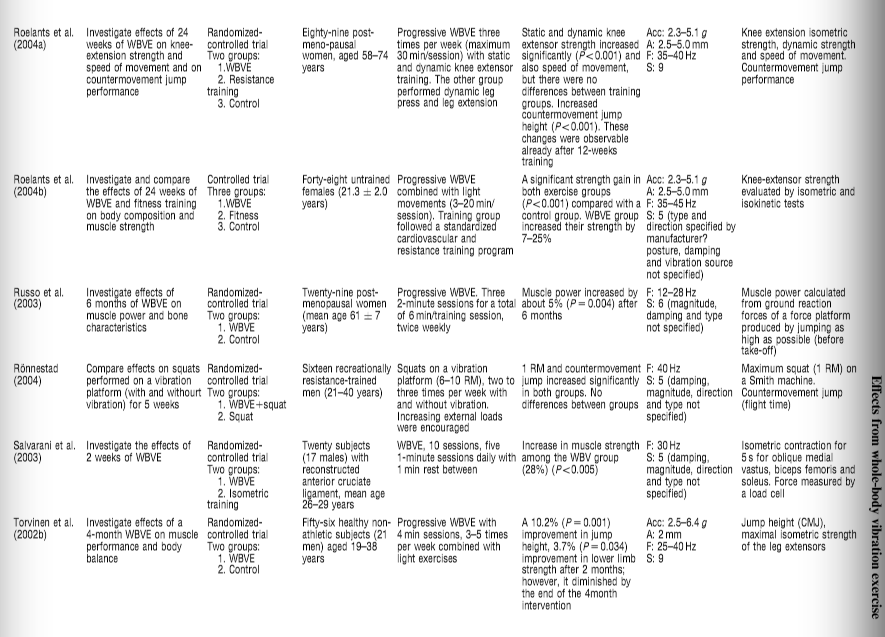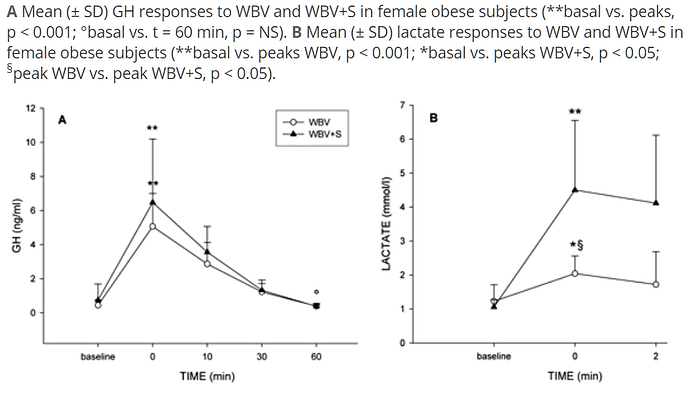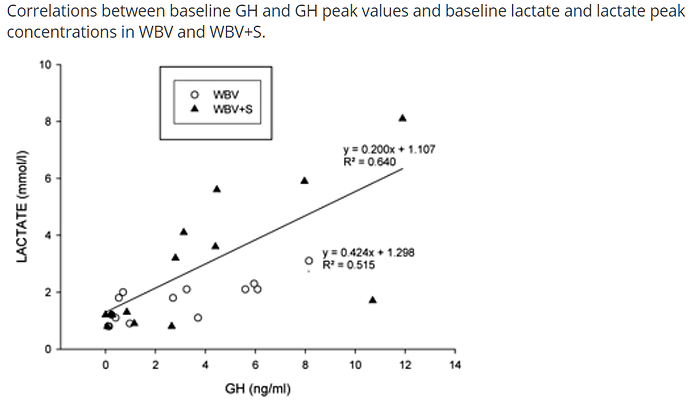This is not just about weight lifting. However, athletes and weight lifters have been the primary groups pushing the layman usage and hence research on the topic, and there’s not a generic category in this forum, so I’m putting it here. 
OVERVIEW: WHOLE BODY VIBRATION
A WBV platform is like a small “magic fingers hotel mattress” you stand on but it’s hard. 
WBV was originally developed for clinical use in the 1970s by the Russian space program when their scientists were looking for a way to combat the negative effects of a zero gravity environment.
I have an interest in WBV since I heard of it circa 1993. There were almost no options for it then, product-wise, and close to zero formal research available on the internet (USENET then) in english.
I really got fascinated with the idea again (2016 WWW) after my heart surgery, since I was so huge, and a lot was edema, and I could barely walk (being bedridden for a year, room-ridden a year before that, house-ridden a year before that, and sedentary for health reasons for a few years before that), or lift my arms (which I hadn’t done in a good 3-4 years).
WBV was something that could address muscular blood flow, muscle-fiber triggering, and lymph system stimulation, all without me having to be able to exercise. Since you can’t take someone with such muscle atrophy they can hardly walk 9 steps to the toilet without a herculean, rock-climbing-level effort, and give them a now >500# body, and expect them to ‘exercise.’ Merely standing up is immense exercise in that condition.
But the increase in commercial options was significant. And what little measuring had now been done suggested the muscle-fiber-triggering effect was up to 90% (normal weight lifting, outside of world-class-level power lifting, is about 40%), because the “hyper-gravity” situation sparked the fast-twitch fibers not just slow-twitch. The increased blood flow helped heal and grow the muscle. The increased muscle motion helped move the lymph. And all kinds of generally positive hormonal and other chemical results.
There were reports about weight lifters using them because the blood and lymph flow helped increase the effects of the exercise during (strength and speed), and move out some of the lactate from severe DOMS after. There was now research that showed that much like any other weight-bearing exercise, HGH was increased, testosterone was increased, and cortisol was reduced. There were improvements in proprioception, reaction speed and balance. Hand-eye coordination is another area of study… the potentials are apparently endless.
I even saw a note about them being used (on one or two legs at a time) on expensive race and show horses to help with healing and post-injury/exercise pain. In the last 10-20 years more ‘partial body vibration’ (PBV) has come around as well to target just one area (often upper body).
There isn’t a ton of research but there is some now. And some (esp for glucose and lipolysis) findings are dissimilar in different studies. One of the problems with this aside from not much research is the differences, often unstated, in the parameters being researched – the frequency, the amplitude, and motion form, the state of the person (relaxed, tensed, in motion, additional weight bearing), the length of exposure, the length of rests within exposure, and without all this being consistent or comparable it is not clear why one study finds X and another Y or not-X.
Some studies do show that if the frequency is low the amplitude needs to be higher to get some affects. At least one the opposite. I’ve seen little looking at a whole range of frequencies at the same amplitude for a given measure (alas) though a few studies look at 2-4 points. Then of course there are youth, adults, elderly, men vs. women, menopausal women, injured, trained vs. untrained etc. and every single one of these factors appears to make some difference. Studies focus on anything from ankle flexion to helping with COPD symptoms. That’s a pretty drastic range.
But by this point there are testimonials from users as well as physical therapists and chiropractors about incredible healing speeds with injuries and improvements in exercise. There are research measures of sports performance activities, statistically significantly higher if done shortly after using WBV. And platforms were now present and used by most pro sports teams, in military and other hospitals with physical therapy focus, etc.
WBV PRODUCTS AND TECH
In WBV products there are primary metrics:
– the amplitude (degree of motion from resting to max displacement),
– the motion type (vertical, oscillating, sinusoidal, triplane),
– and the motion speed (measured in Hz, motion-cycle-per-second).
type and speed also affected by the occasional product with two impossible-to-be-perfectly-synchronized-motors instead of one under a plate
((vert) vibration is transferred to both feet synchronously, with an up and down movement of the base; in another type, the base operates with a central pivot in an alternated way, like a teeter-totter; when the right foot is low, the left foot is high, and vice versa. In a third device, a triplanar machine, the movements of the base vary between up and down, forward and back, and side-to-side)
There are secondary metrics:
– the weight-bearing capacity of the plate; lower capacity means higher weight on it will suppress some motion or amplitude or both;
– the weight of the unit (which affects ability to move it around let alone transport it, and is dominantly affected by its construction materials of course, this also affects its durability under serious uses {like the horse haha}),
– the speed options (some offer only ‘variable programs,’ like with the old LifeCycle gym bikes, while some are just a dial you tune to a Hz – obviously this is the gigantic area for research, is diff Hz effects; in industrial measure, the <15-20Hz had some real problem effects on organs when done multi-hours continuously. Actually nearly anything in industry is an issue of it being done “too much” I suspect, in addition to other elements),
– the height of the plate (which affects who can get on it),
– the floor space of the plate (which affects how you can stand on it, what you can do on it, or whether wheelchairs can fit),
– and any attachments to the plate (some plates are attached to a vertical stand with controls and display, some merely to a balance grip bar, some to nothing, and this affects what you can do on it, or fit on it {with room off to the side without interference} as well).
An example of one of the small-plate sinusoidal machines:
An example of one of the large-plate vertical machines:
This is the one I have:
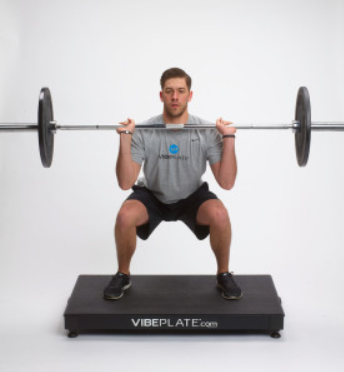
Previously, about the only research I could find on the topic only existed from the industrial side, which was measuring the damage created by different motions, amplitudes and frequencies in workplace environment platforms and machines which vibrated. It was bad. But that was generally irregular motion (not vertical), and long chronic exposure (there is some indicator that there’s a point where TOO much of it starts a series of diminishing returns, eventually resulting in actual negatives – this refers to mechanical or muscle elements, haven’t seen enough about the biochemical elements to say on that topic).
The chinese sourced machines are 90%+ of the market. Same thing diff packaging. Cost vs. sale price often insane difference. They tend to be barely big enough for someone not huge to stand on. Their weight capacity is low enough that anybody >250# would suppress most of the motion. They tend to be attached to stuff that limits at least one side spacially. They tend to be high enough that you couldn’t get someone elderly on it, or anybody with difficulty stepping onto curbs never mind something 3x that high, or anyone in a wheelchair (which most of them couldn’t fit anyway), etc. The small one in the above pics looks like those.
Their motion tends to be a variety of non-vertical patterns, and pretty much everything that isn’t sheer vertical has problematic industrial research results (putting massive skewing-pressures on joints, spine, etc. plus forcing the knees and pelvis to take most of the motion impact, reducing it dramatically at the top of body). And the makers tend to brag (read: lie flagrantly haha) about their amplitude, some of which even without lying is insane, most of which is very destructive to the body. (Some must have attachments to the plate to hold on to or it would literally throw you off. Like an Urban Cowboy bronco machine without the fake horse.)
MINE
A couple years before my health crashed to house-confinement, let me skip a page of explanation here and just skip to the end, my subconscious (dream) told me (I had this specific question about my legs and lipedema and an electronic tech I’d been discussing with someone) that the frequency of 22Hz, as well as a little bit of 23-25Hz, and also 162Hz “for protection” – but mostly 22Hz – was what I should use on my body. I never had anything to apply that to my body in some way though, not really. (You could barely even get it for brainwaves with audio due to sound card /speaker limits.) So this would be something I could tune to 22Hz and stand on, which just seemed like an amazing opportunity.
One day my best friend (a man) was waxing on about how, if he had more money (and he had some, just not riches) he would buy this beautiful $25K watch he’d been reading about. I waxed on in turn about how if I had money, I’d buy this beautiful $3.5-4K WBV plate for physical therapy in my tiny home gym, and it even did 22Hz so I could see if that helped. He apparently later had this huge rash of heart-tugging guilt about how he wanted a bauble and I was dreaming of something to help me learn to walk again – and actually bought it for me! OMG.
The one I chose was a large plate size (30"x48") with no attachments interfering, so I could move around on it and even someday lift weights on it. It was a sheer vertical motion form, as I felt that was the only one that was actually healthy. It was limited to a low 2mm amplitude, however the vertical form was good with that, and anything over that I felt had risk/health issues as well. It had a 10-60Hz range, done on a dial. Although it had a steel version for a couple hundred pounds, it had another in aluminum for about 80, so it was movable. And it had a weight capacity of 2400 pounds! Holy cats. And the company was a USA corp and seemed to be pretty legit. https://vibeplate.com/ for anybody interested.
WBV RESEARCH
Here’s a few of images I saved that were based on research papers. The endocrine one with humans, brief exposure (I think it was 60-90s at a time, 5-10x w/60s rest between. European Journal of Applied Physiology) the bone one with sheep (which was… I fuzzily think it was 20min at a time 3x weekly for a year, that one was published in Nature), and one on older women and bone (‘Inhibition of osteopenia by low magnitude, high frequency mechanical stimuli’ - couldn’t find actual paper just now, just the title) I don’t recall specs on that one. Some of the others are overviews so they’re combining diff papers.
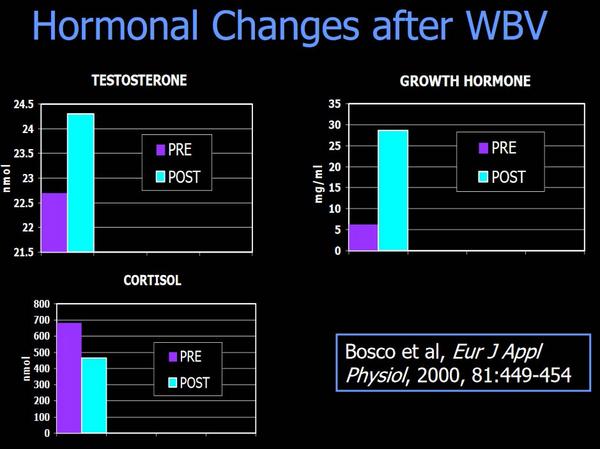

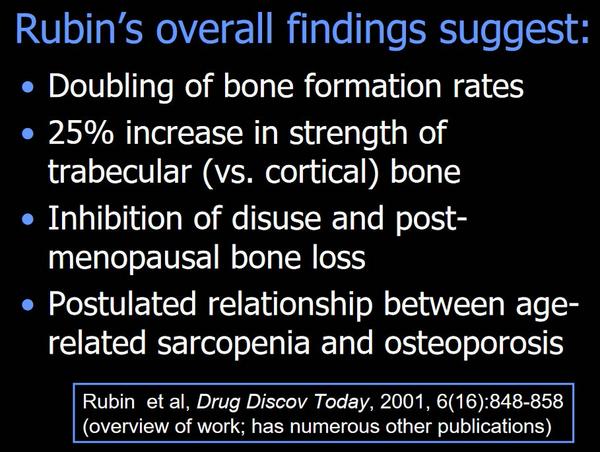
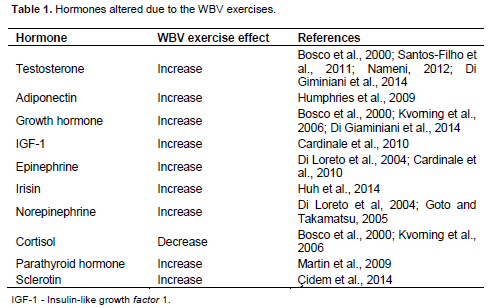
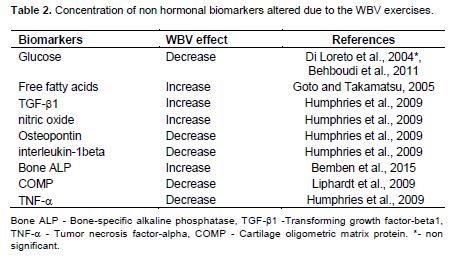
These are the variables that need testing and declaring in a protocol. Differences in these (or lack of declaring them) are the primary reason the research is not clearer at this point.
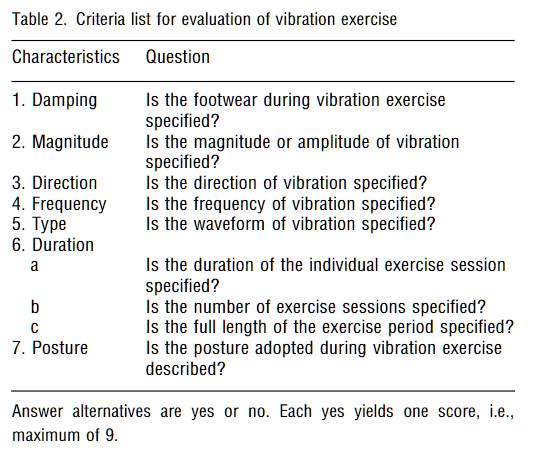
A few white paper pics from a review paper
This is a different overview but probably approx the same studies (as both these papers doing a review excluded a lot for insufficient data/controls and there’s not a ton of english research):
A few super-brief note(s).
Effects of whole body vibration training on body composition, skeletal muscle strength, and cardiovascular health
Journal of Exercise Rehabilitation 2015 (Korea)
https://www.e-jer.org/journal/view.php?number=2013600223
This one’s worth reading if you’ve interest in the subject as it is a very succinct “overview” of field research, not much detail/info but mentions results and theories in many different areas and has links.
The Effects Of Vibration Exercise On Anaerobic Performance Using The Wingate Test
Uni North Dakota Theses and Dissertations
https://commons.und.edu/cgi/viewcontent.cgi?article=2385&context=theses
(vert:VV sinusoidal:SS) …VV stimulation shows greater transmission through the trunk and upper body because SV causes the pelvis to rotate slightly which dampens the vibratory waves… VV platforms have a larger effect size for long-term protocol while the SS platforms have a greater effect size for acute treatments… In an examination of exercise protocols, Enoka (2008) suggested utilizing a moderate frequency of 30Hz in conjunction with higher amplitude of 8mm versus using other common frequencies of 40Hz or 50Hz, and amplitudes of 2mm or 4mm.
=====
Last night I was reading this research paper
Growth Hormone-Releasing Effects of Whole Body Vibration Alone or Combined with Squatting plus External Load in Severely Obese Female Subjects
https://www.karger.com/Article/FullText/342066
WBV alone stimulates GH release and lactate production in severely obese female subjects, with no additive effect when combined with squatting plus external load. {PJ: With or without load, growth hormone increased either way; lactate increased either way; but lactate increased a lot more with load where GH didn’t.}
I did not know of this tidbit about obesity until I read this paper:
It is well known that abdominal obesity is associated with decreased spontaneous 24-hour GH release and reduced GH responsiveness to pharmacological stimuli and exercise. The GH hyporesponsiveness of obese subjects restored after significant weight loss, thus suggesting that the obesity-related neuroendocrine alterations are secondary to the obese status and reversible. Although the matter is controversial, this somatotropic hyporesponsiveness has been attributed to a central (hypothalamic) somatostatin hypertone or GHRH deficiency and/or peripheral factors, including the elevated plasma levels of nonesterified fatty acids (NEFAs) and free IGF-1, previously reported in obese subjects.
Like it’s not freakin bad enough to be fat but the body actually reduces growth hormone if you are. Grrr. But it seems WBV doesn’t have that same factor going on – it is not yet known why.
…the main finding of this study was the significant WBV-induced increase of GH levels in severely obese females. Although the GH peak range was wide, the whole pattern of GH responsiveness was comparable among all the subjects. It is noteworthy that the GH-releasing effect of WBV in this group of obese subjects was quantitatively comparable to that previously observed by our group in healthy normal-weight subjects receiving the same WBV stimulus (GH peaks 4.3 ± 3.5 ng/ml vs. 5.1 ± 1.9 ng/ml). Differently from other GH-releasing stimuli which are negatively influenced by the BMI degree, these findings seem to suggest the scarce influence of the body mass excess on the WBV-stimulated GH secretion.
=====
Some gyms have these, although the type varies. Weight lifters wanting to increase muscle fiber recruitment, increased NO and circulation, increased power and speed and coordination, and reduction of DOMS (due to lymph flow) may find WBV useful.
PJ

